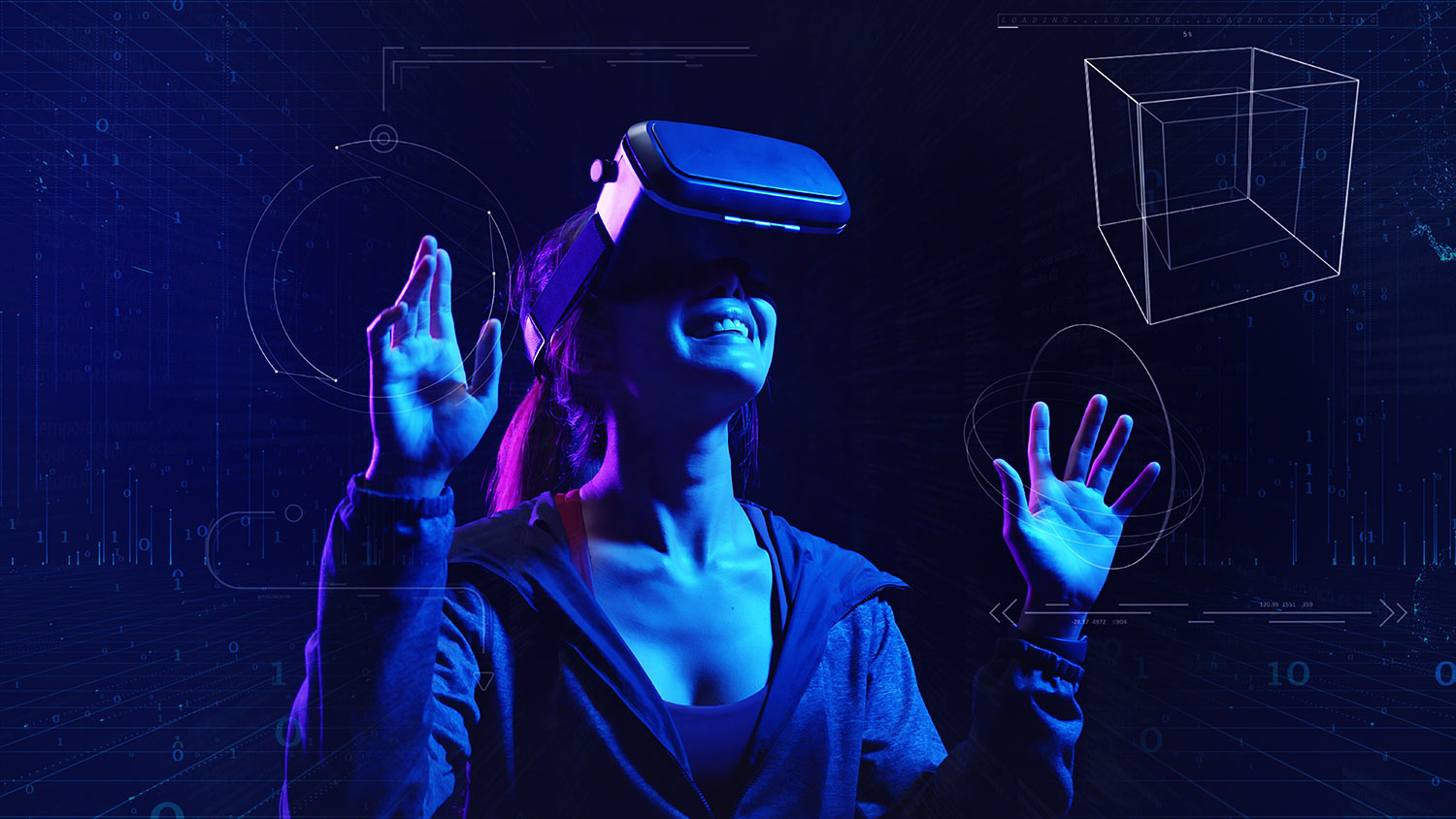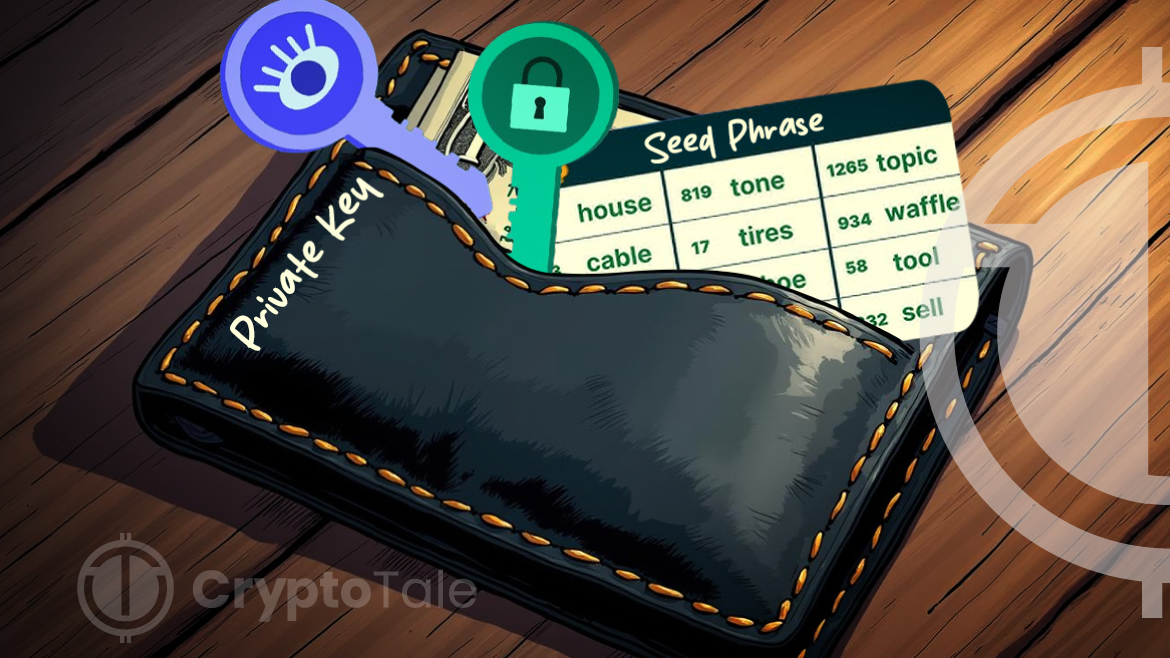The metaverse is a phenomenon that became very popular during the Covid Pandemic as it allowed people to not only interact with their friends online during lockdown, but it also allowed them to earn cryptocurrency for completing certain tasks in the metaverse, which people from all over the world leveraged following the pandemic leaving a majority of them unemployed.
The uprise in metaverse interest led to a surge in the prices of metaverse tokens and metaverse coins, which ultimately triggered the strongest crypto bull run to date, as cryptos across the board set new all-time highs (ATH).
At the core of every metaverse is Decentralized Finance (DeFi) technologies such as blockchain and cryptocurrency, but there was a new technology which made the metaverse possible, and ignited the play-to-earn movement where metaverse participants could play games and earn crypto for doing so.
This article will cover all things metaverse, and will examine the technologies needed to build a metaverse as well as some of the most well-known metaverses in the space.
What is the Metaverse?
The metaverse is a concept for an online virtual 3D world with virtual land, objects, and experiences. Imagine a world wherein you can work remotely, visit virtual landmarks and destinations, view virtual artworks, or even join virtual events with your peers, all from the comfort of your own home.
There are already 3D virtual worlds such as Decentraland, The SandBox, and Axie Infinity that have incorporated certain aspects of the metaverse to bring multiple elements of our lives into online worlds.
However, it is still early days for the metaverse, leaving many to wonder whether there will be one all-encompassing metaverse or if there will be multiple metaverses that a person will be able to travel between.
As the metaverse concept progresses, it’s expected to expand beyond video games and social media platforms.
Decentralized governance, remote working, and digital identity are just some of the potential features the metaverse will support in the near future. It will also become more multi-dimensional via connected devices such as VR headsets and glasses, allowing users to physically walk around and explore the 3D spaces.
The metaverse gained popularity when Facebook changed its name to Meta in October 2021. Following the rebrand, the company also poured resources into their new division called Reality Labs, spending approximately $10 billion in 2021. The CEO of Meta, Mark Zuckerberg, believes that metaverse content and software will be as widespread as smartphones in the future.
The metaverse adoption was also accelerated by the Covid-19 pandemic, since people looked for better ways to interact with their peers while isolated and working from home. This has led to the rise in virtual 3D worlds where co-workers can join meetings and catch up with, as well as collaborate with, each other.
An example of such virtual workspaces is the Microsoft Mesh that was unveiled in November 2021. The Microsoft Mesh allows users to mingle and collaborate through immersive spaces, making remote working more engaging and fun.
There are also online games that are embracing the metaverse. For example, Pokemon Go was among the first to implement metaverse technologies to enable players to hunt virtual Pokemons in the real world using their smartphones. Fortnite, another popular game, has expanded its product to include the ability for players to host virtual events and concerts.
What Are Metaverse Coins?
Each metaverse has a native coin or token that is built on top of crypto and blockchain technology, which will be explained slightly later in the article.
These native metaverse coins are used to buy and sell goods in the respective metaverse, take part in the metaverse governance, as well as other activities such as enjoying benefits and performing other transactions on the particular metaverse.
Each of the metaverse coins can be exchanged for either stablecoins, fiat currencies, or other cryptos through decentralized and centralized exchanges.
Metaverse History
The metaverse history starts all the way back in 1992 when a 30-year-old dystopian sci-fi book titled Snow Crash was written and published by Neal Stephenson. This book was the first time that the term “metaverse” was coined.
The novel depicts people using virtual reality technology and digital avatars of themselves to explore an online, digital world. In this digital world, the characters are able to walk down the street, visit shops, offices, or amusement parks, as well as enjoy other forms of digital entertainment.
If the metaverse were to become a reality, then another technology would be needed. This technology is called virtual reality (VR) technology. The exact beginning of VR technology is still up for debate, but rests somewhere between the 1950s and 1960s.
A cinematographer/filmmaker by the name of Morton Heilig wrote of an “experience theater” that was able to draw viewers into the onscreen activity. He then built a prototype of this idea in 1962.
In 1968, the first VR headset was created by Ivan Sutherland, who had the help of his students Bob Sproull, Quentin Foster, and Danny Cohen. This head mounted display was chunky, and therefore heavy, so it had to be suspended from the ceiling to be usable.
It was only in the 1980s that the term virtual reality picked up popularity. Widespread commercial releases of VR headsets subsequently began in the 1990s. Shortly thereafter, there was a dip in interest for the technology until the eventual release of the Oculus Rift in the 2010s.
The launch of the Oculus Rift resulted in a decade where the development of the technology grew, as well as their popularity in video games.
There have been a number of iterations that could fall under the metaverse blanket term over the decades – making all of them part of the metaverse history.
A very basic metaverse is cyberspace, which was coined in the year 1982, and refers to a virtual computer world that is distinct from the real world. It created the idea of peoples’ online activities taking place in an environment that is separate from the physical world.
The year 2000 was the year when Gartner described a fusion of the virtual world with the real world. This fusion of the two worlds was called the Supranet. This relates to metaverse history as it envisioned a rich virtual world, and how it will interact with the physical world.
Gaming plays a massive role in the history of the metaverse. Perhaps the most notable game that played a role in the metaverse’s history is Second Life, which is a video game released in 2003. This game was considered the first metaverse in history, and represented users as avatars that could then build a second, fictional life for themselves in the digital realm.
Another game that earned the metaverse title is Roblox. It too is a major part of the metaverse’s history since the company is also planning on building its own modern metaverse.
Other examples of metaverses are massively multiplayer online role-playing games, also known as MMORPGs. These large-scale multiplayer games allow players to explore a virtual world while also interacting with other players.
Metaverse history makes two more stops in 2011 and 2018, with the book and then the movie, Ready Player One. The story depicts a metaverse which again offers an escape from a dystopian reality.
In Ready Player One, the metaverse is a VR game that doubles as a secondary society – a place to interact with others.
Fast forward a decade or so, the latest benchmark in metaverse’s history is the Covid Pandemic, which influenced a major push for the creation of the metaverse. With shops unable to open and people unable to leave their homes and interact physically, the need for a virtual space to do these activities was intensified.
Technologies Powering the Metaverse
To achieve a truly immersive experience in the metaverse, several technologies are combined. Companies are combining technologies such as augmented and virtual reality, blockchain technology, 3D construction, artificial intelligence, and the Internet of things to power the 3D world.
Blockchain and Cryptocurrency
Blockchain technology allows a decentralized and transparent solution for digital proof of ownership, transfer of value, digital collectibility, governance, accessibility, and interoperability. The value that is transacted on the blockchain is known as a cryptocurrency. Cryptocurrencies enable users to transfer value while working and socializing in the 3D digital world.
In the future, cryptocurrency can potentially become an incentive for people to actually work in the metaverse. As more companies take their offices online for remote working, we might see the introduction and rise of metaverse jobs.
Augmented Reality and Virtual Reality
Augmented reality and virtual reality allow us to immerse ourselves in these virtual worlds and experiences. These technologies serve as the entry point into the metaverse. Let’s take a look at what the difference is between virtual reality and augmented reality.
Augmented reality uses visual elements and characters to morph with the real world. It is also more accessible than virtual reality and can be experienced on almost any mobile device or digital device that has a camera. Through augmented reality applications, users can see both their physical worlds and digital assets morphed into one hybrid, interactive environment.
On the other hand, virtual reality, much like the metaverse concept, produces an entirely computer-generated virtual environment. Users can explore the virtual world using virtual reality devices, such as headsets, sensors, and gloves.
The way virtual reality and augmented reality work represents early signs of becoming the foundation for the metaverse. Virtual reality is already creating a world that merges with fictional visual content.
As the technology progresses and gets more advanced, we could see virtual reality expand the metaverse experience to involve physical simulations with virtual reality equipment. Users will soon be able to feel, hear and interact with people from all across the globe. Considering the hype around the metaverse, we can expect more metaverse companies to invest in virtual and augmented reality equipment development in the near future.
Artificial Intelligence
Artificial intelligence is a large part of our daily lives in strategic business planning, facial recognition, decision making, faster computing, and much more. Artificial intelligence experts have also recently started looking at ways to apply artificial intelligence to create more immersive metaverses.
Artificial intelligence has the potential to process a large volume of data at lightning speeds. Combined with machine learning techniques, artificial intelligence algorithms learn from previous iterations, taking into account historical data to produce unique insights and outputs.
In this metaverse, artificial intelligence can be applied to all non-player characters (NPCs) in various scenarios. Almost every game includes NPCs as part of their environment. These NPCs are designed to react and respond to players’ actions.
With the processing capabilities of artificial intelligence, NPCs can be placed across 3D spaces to facilitate lifelike conversations with users or perform other specific tasks. Unlike a human user, an artificial intelligent NPC is able to run on its own and be used by millions of players at the same time. The NPC can also operate in several different languages.
Another potential application for artificial intelligence in the metaverse is in the creation of metaverse avatars. Artificial intelligence engines can be used to analyze 2D images or 3D scans to generate more realistic and accurate avatars. To make the process more dynamic, AI can also be used to create different facial features, expressions, clothes, and hairstyles.
3D Reconstruction
Although not a new technology, the use of 3D reconstruction has risen during the pandemic. This is especially true in industries such as the real estate industry, as lockdowns prevented buyers from visiting properties in person. Due to this, some agencies used 3D reconstruction technology to generate realistic and natural-looking spaces. By using sophisticated 3D cameras, we are able to take our physical world online and render accurate 3D photorealistic models of buildings, objects, and physical locations. The 3D spatial data and 4K HD photography are then passed to computers to process and generate virtual replicas in the metaverse for users to experience.
Internet of Things
The concept of the Internet of Things (IoT) was introduced back in 1999. Basically, IoT is a system that connects all of the devices in our physical world to the internet.
Once connected to the Internet, these devices each have a unique identifier and the ability to send or receive information automatically. IoT is currently being used to connect devices such as thermostats, voice-activated speakers, medical devices, and much more to a wide range of data.
One of the applications of IoT on the metaverse is to collect and provide data from the physical world. This increases the accuracy of the digital representations.
Implementing IoT can seamlessly connect the 3D world to a long list of physical-world devices. This allows the metaverse to achieve real-time simulations in its environments and experiences. To take the optimization of the metaverse environment to the next level, IoT could also use artificial intelligence and machine learning to manage and make sense of the data that it collects.
Top 3 Metaverse Coins
Axie Infinity
The first metaverse coin that is on the list of the most popular metaverse coins is AXS, which is the native token for the metaverse game, Axie Infinity.
Axie Infinity is an online game with gameplay that revolves around digital creatures known as Axies. Players can collect Axies as virtual pets with aspirations to battle, collect, breed, raise, and build kingdoms for their Axies.
What makes Axie Infinity different from other online games is the synergy that it has established between standard online gaming and blockchain. This Ethereum-based game allows players to own their virtual assets and rewards players who are able to reach an advanced level of skill.
The Sandbox
Next on the list of the most well-known metaverse coins is SAND, which is the native token of the metaverse called The Sandbox.
The Sandbox is a virtual world wherein players can own, build, and monetize their gaming experiences in the Ethereum blockchain.
The Sandbox metaverse is best known for The Sandbox (2011) and The Sandbox Evolution (2016), which generated 40 million downloads across iOS and Android combined.In 2018, the ecosystem’s developer, Pixowl, decided to bring this successful User Generated Content Gaming IP and large community of creators from mobile to the blockchain realm.
Decentraland
The third most well-known crypto metaverse coin is MANA – the native token for the Decentraland metaverse.
Decentraland is an Ethereum-based metaverse that seeks to incentivize a global network of users to participate in its virtual world through the use of crypto technology.
In the Decentraland metaverse, players can buy and sell digital real estate, as well as explore and interact with virtual games in its metaverse. Over time, the platform has evolved to implement interactive apps, in-world payments and peer-to-peer communication for users.
To Recap
A metaverse is a virtual world where players can interact with other players, as well as immerse themselves with in-game experiences that sometimes include a monetary incentive – made possible by blockchain and crypto technology.
Each metaverse has an associated metaverse coin. These metaverse coins can be used to enjoy metaverse-specific benefits as well as take part in each metaverse’s governance process.
Each of these metaverse coins can be traded and exchanged on centralized and decentralized exchanges. The three most well-known metaverse coins are SAND, MANA, and AXS.






